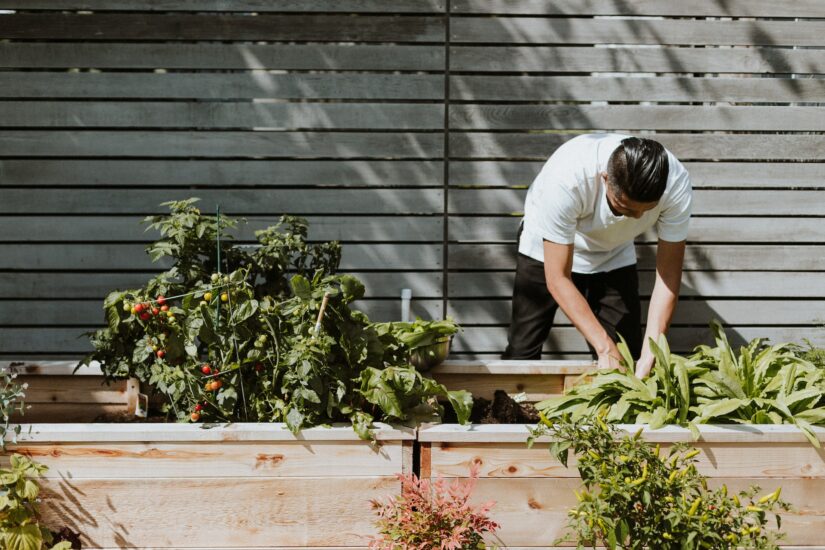Guide to Gardening Tools: What Tools Do You Need for Your Home Garden?
One of the favorite activities of plant lovers is tending to their gardens. It takes some time for new garden owners to identify the necessary and unnecessary tools.
This is because many gardening tools are out there, and they serve different purposes.
Below is a list of garden tools every gardener should have;
1. Gloves
A pair of gloves is needed to protect your hands from injuries and dirt. Gloves also protect the hands from diseases such as legionellosis.
Gloves can be used for picking small twigs and pinching the soil. It also gives a firmer grip on other tools.
Types of Gardening Gloves
There are two major types of gloves: Light duty and heavy-duty gloves.
- Light-duty. Light-duty gloves can be used for most gardening projects that do not require much hand protection. Such activities include planting and thinning. They are designed to protect the hand from dirt and small scratches.
- Heavy-duty. Heavy-duty gloves protect the hand from thorns, thistles, and other prickly weeds like Canada Thistle. They are also perfect for intensive garden activities like picking branches and rocks. The only drawback with their use is that they may be less comfortable due to their thickness.
Irrespective of the type of glove you buy, consider the grip, fit, durability, and breathability.
2. Hand Fork
The hand fork, also called “cultivator,” is useful for cultivating, digging up soil, and transplanting seedlings. Aside from these tasks, you will often use the hand fork for digging up weeds.
It can also thoroughly mix additives and compost with the soil.
Types of Hand Forks
Hand forks usually have three-pointed prongs called tines. The tines may either be flat or round.
- Hand fork with flat tines. Hand forks with flat tines are suitable for weeding and transplanting flowers.
- Hand fork with round tines. Hand forks with round tines handle well when used to aerate the soil during pre-planting activities.
Avoid buying hand forks that lack strong handles and shafts. The tang needs to be firm to avoid injury during use.
3. Watering Can
Watering can need no introduction. It comes with a spout and handle and is usually made of plastic, ceramic, or metal.
Plastic watering cans are less expensive and lighter to carry, except they are not durable. Ceramic watering cans are heavy, expensive, and can break easily. They are best for garden decoration. On the other hand, metallic watering cans are durable but heavy and can last longer if galvanized to prevent rust.
The capacity of your watering can should be 1-2 gallons for easy use as it would save you the number of trips.
Tips to Effectively Water Your Plant
- Confirm the water need of the plant.
- Water the soil, not the leaves.
- Water thoroughly and evenly.
4. Hand Pruners
Hand pruners, also called secateurs, are used for cutting soft branches, flower stems, leaves, and vegetables. Pruning helps restrict the plant’s size, remove dead parts, and improve the plant’s health. It can also protect the plants from pests and damage. Likewise, you may need to prune to ensure your family’s safety around a plant.
Types of Pruners
- Bypass pruners. The bypass pruner is a must-have tool for gardeners. It features two curved blades that bypass each other like scissors.
It is effective in trimming and cutting flexible stems.
- Straight blade pruners. Rose growers and other gardeners prefer this pruner because it can easily get into tight spaces without damaging the flower.
- Anvil pruners. These pruners have a blade that closes against the anvil. It is excellent for cutting woody stems.
- Ratchet pruners. The ratchet pruners are similar to anvil pruners but easier for gardeners with small hands. It is useful for cutting tough stems with little effort.
5. Hand Trowel
A hand trowel is used for digging small holes, planting seeds, and digging up stubborn weeds. When choosing a trowel, pick the one with a narrow and sturdy blade.
Types of Hand Trowel
- Dixter trowel. A Dixter trowel has a blunt end. It is perfect for planting and weeding.
- Potting trowel. The potting trowel has high sides that help it scoop soil. It is great for moving and transplanting.
- Traditional trowel. A traditional trowel is one of the must-have gardening tools as it can perform most tasks of the other trowels.
- Transplanting trowel. It features a long narrow blade that makes it easy to dig.
- Weeding trowel. The weeding trowel features a sharp blade that makes it great for cutting and uprooting weed.
Conclusion
To start gardening, you do not need every tool in the market. The five highlighted above will get you started.
Your gardening tools will eventually increase as your experience improves, and your garden expands.
